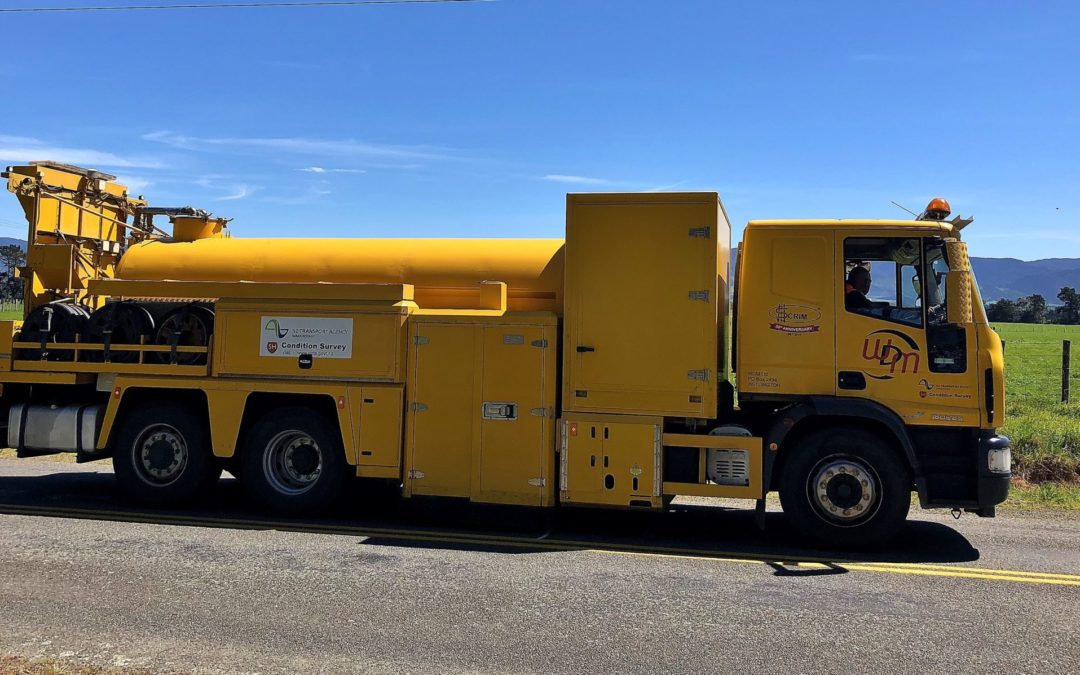SH53 a short but important stretch
March 2019
Each year the SCRIM® truck monitors the condition of the entire 11,000km of the national highway network. At just 17.8 kilometres long, State Highway 53 in South Wairarapa may appear as a relatively unimportant stretch of road.
In terms of safety on the national highway network, however, this road linking Featherston and Martinborough shoulders a big responsibility.
The New Zealand Transport Agency (NZTA) uses the road for calibration of the purpose-built vehicles that check the skid resistance and surface conditions of roads – the less skid on a road, the safer it is for users.
Every year New Zealand TranA monitors the condition of the entire 11,000 kilometres of the national highway network.
For the fleet of two SCRIM® [Sideways-force Coefficient Routine Investigation Machine] trucks, that is 22,000 kilometres of driving as the highway is monitored in both directions.
NZTA regional transport systems manager Mark Owen said measuring a road’s friction plays a huge part in keeping drivers safe, particularly when they are braking or cornering.
The injury crash rate on a slippery road can be up to nine times higher than on skid-resistant ones.
“The SCRIM® uses state-of-the-art technology, including 25 lasers, GPS, geometric measurement equipment, video and friction testing equipment in both wheel-tracks, to show us in detail where a road surface could lead to braking issues or skid-related crashes.
“We can then nip those problems in the bud by resurfacing those roads before the surface becomes a problem.”
Owen said the data was critical in helping to decide how and where NZTA invested in state highway maintenance, as well as being used to investigate and plan future improvements.
Both SCRIM® trucks, shipped out each year by WDM Limited, operate in New Zealand from about October through to April.
Darren Newland oversees the trucks, which go through a month-long rigorous validation exercise each year before the survey starts to check and verify the individual functions the machines collect.
“SH53 and adjoining Te Maire Rd and Kahutara Rd are one of several key sites dotted across the wider Wellington region,” Newland said.
“We manually measure conditions on these sites, and then undertake multiple survey runs at different speeds to prove the trucks gather accurate data at varying survey speeds.
“This involves 30 runs over two days."
“In addition, we use SH53 for ongoing validation, involving another set of repeat runs over a 10km length.”
When put to work, the truck shoots laser beams at the road, detecting ruts and lumps, and measuring roughness and skid resistance, all at speeds of between 25kmh and 80kmh.
Measurements are taken every millimetre along the road [32,000 measurements per second].
An on-board computer – about as powerful as 1000 home computers – crunches the data, helping to identify any problem areas on the road.
Skid-related deaths have fallen nearly 40 per cent since surveys of New Zealand highways for NZTA began in the mid-1990s.
Regular users of SH53 can be satisfied knowing their little stretch of state highway is playing an important role in helping to keep road users across the country safer.
The SCRIM® truck has completed its annual monitoring of the condition of SH2 and SH53 in Wairarapa.
Share this





